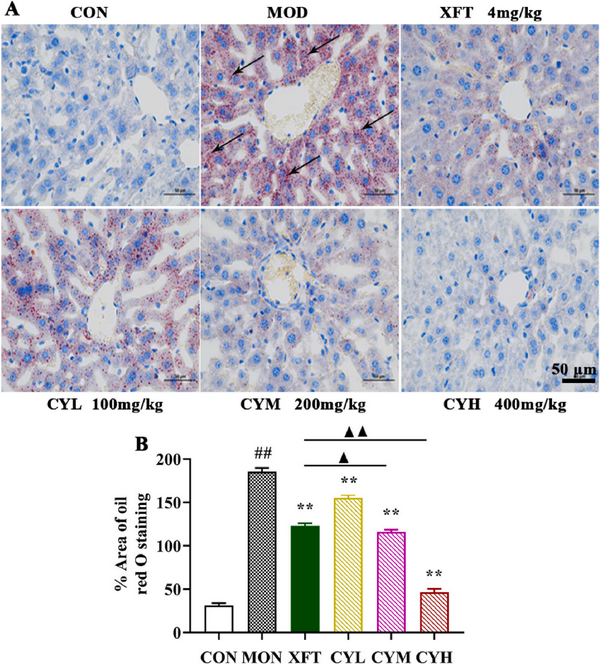Ethnopharmacological relevance: Globally, the incidence rate and number of patients with nonalcoholic fatty liver disease are increasing, which has become one of the greatest threats to human health. However, there is still no effective therapy and medicine so far. Silphium perfoliatum L. is a perennial herb native to North America, which is used to improve physical fitness and treat liver and spleen related diseases in the traditional medicinal herbs of Indian tribes. This herb is rich in chlorogenic acids, which have the functions of reducing blood lipids, losing weight and protecting liver. However, the effect of these compounds on nonalcoholic fatty liver disease remains unclear.
Aim of the study: Clarify the therapeutic effects and mechanism of the extract (CY-10) rich in chlorogenic acid and its analogues from Silphium perfoliatum L. on non-alcoholic fatty liver disease, and to determine the active compounds.
Materials and methods: A free fatty acid-induced steatosis model of HepG2 cells was established to evaluate the in vitro activity of CY-10 in promoting lipid metabolism. Further, a high-fat diet-induced NAFLD model in C57BL/6 mice was established to detect the effects of CY-10 on various physiological and biochemical indexes in mice, and to elucidate the in vivo effects of the extract on regulating lipid metabolism, anti-inflammation and hepatoprotection, and nontarget lipid metabolomics was performed to analyze differential metabolites of fatty acids in the liver. Subsequently, western blotting and immunohistochemistry were used to analyze the target of the extract and elucidate its mechanism of action. Finally, the active compounds in CY-10 were elucidated through in vitro activity screening.
Results: The results indicated that CY-10 significantly attenuated lipid droplet deposition in HepG2 cells. The results of in vivo experiments showed that CY-10 significantly reduce HFD-induced mouse body weight and organ index, improve biochemical indexes, oxidation levels and inflammatory responses in the liver and serum, thereby protecting the liver tissue. It can promote the metabolism of unsaturated fatty acids in the liver and reduce the generation of saturated fatty acids. Furthermore, it is clarified that CY-10 can promote lipid metabolism balance by regulating AMPK/FXR/SREPB-1c/PPAR-γ signal pathway. Ultimately, the main active compound was proved to be cryptochlorogenic acid, which has a strong promoting effect on the metabolism of fatty acids in cells. Impressively, the activities of CY-10 and cryptochlorogenic acid were stronger than simvastatin in vitro and in vivo.
Conclusion: For the first time, it is clarified that the extract rich in chlorogenic acids and its analogues in Silphium perfoliatum L. have good therapeutic effects on non-alcoholic fatty liver disease. It is confirmed that cryptochlorogenic acid is the main active compound and has good potential for medicine.

